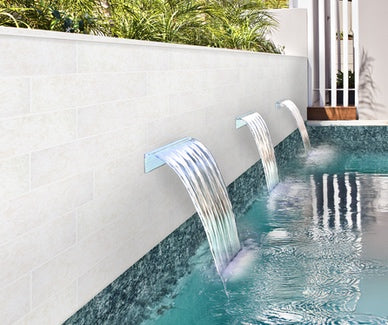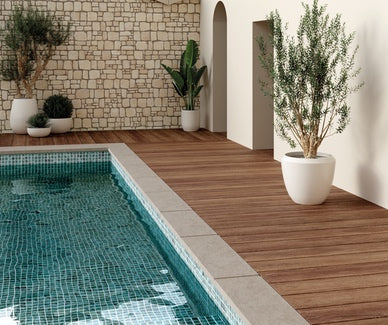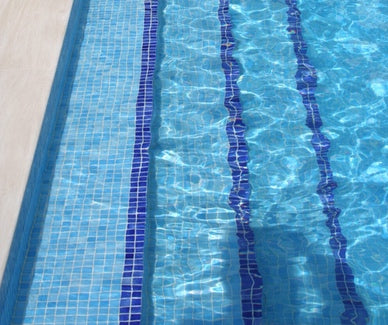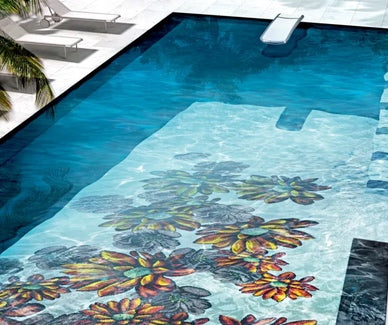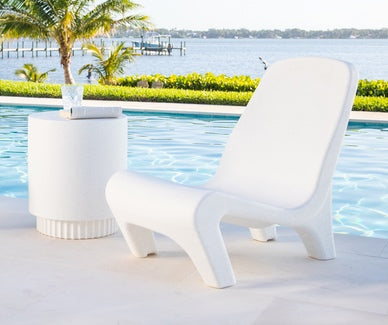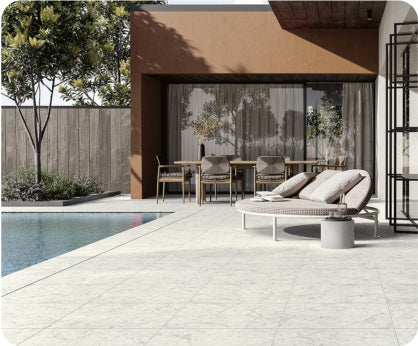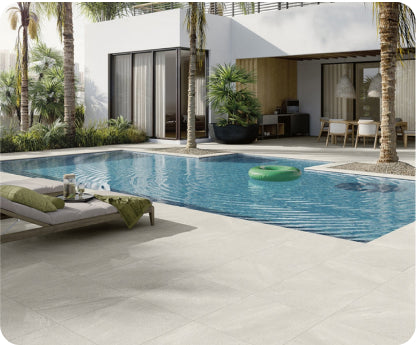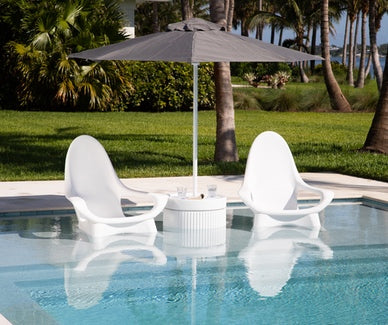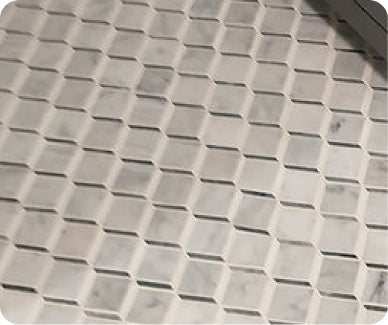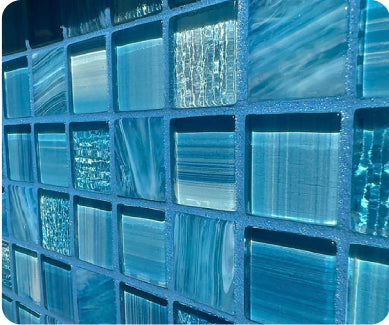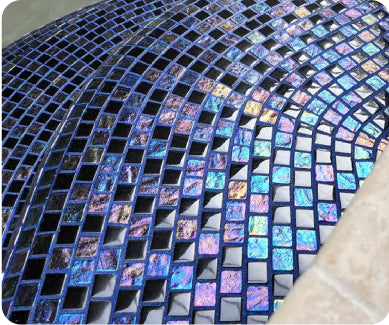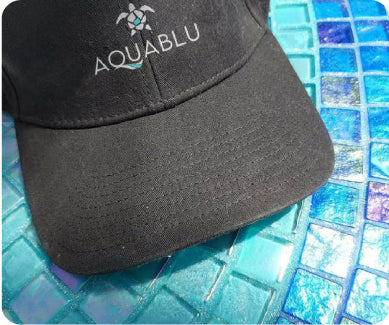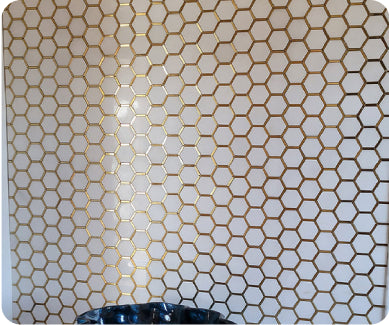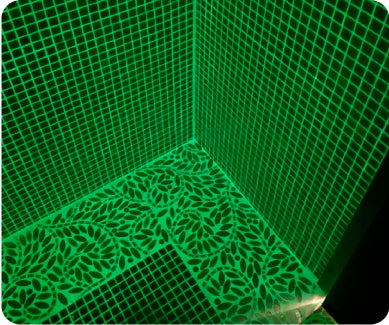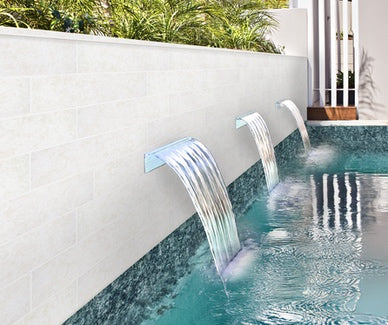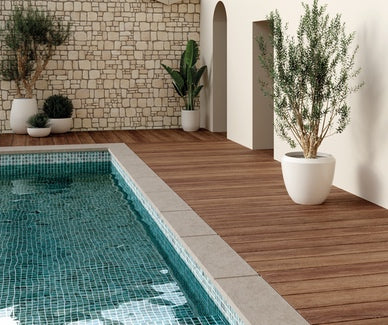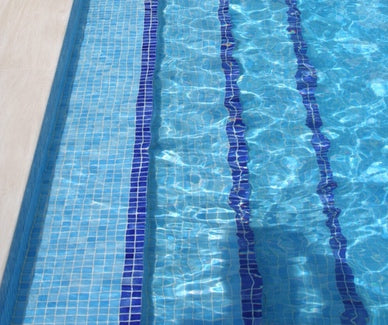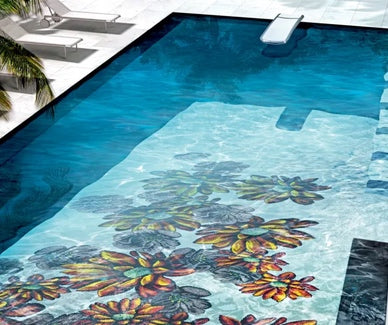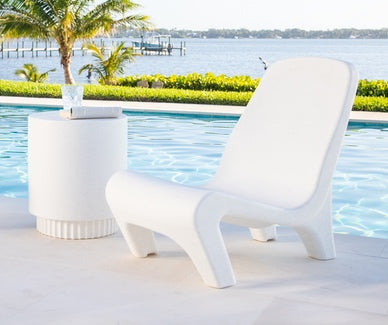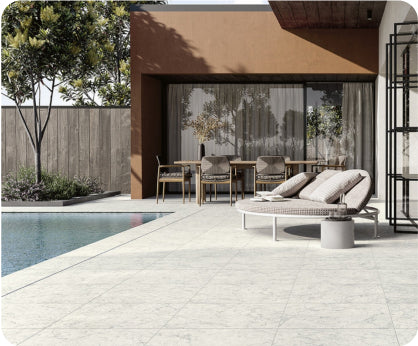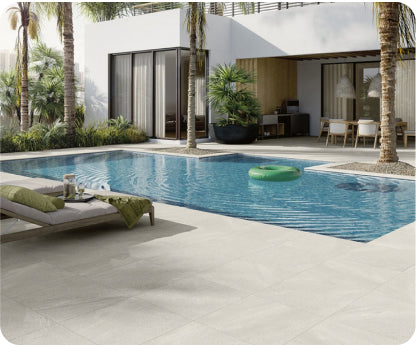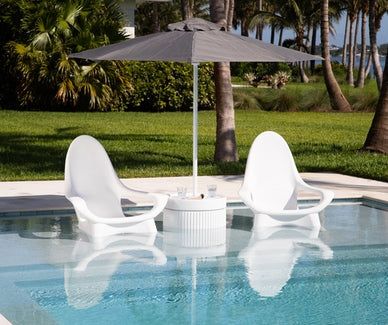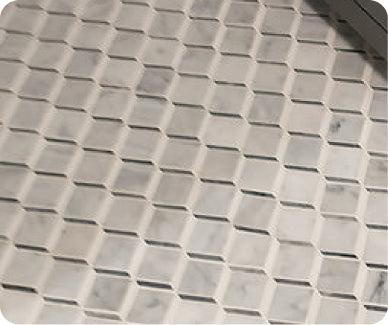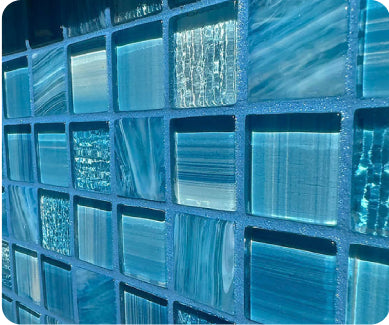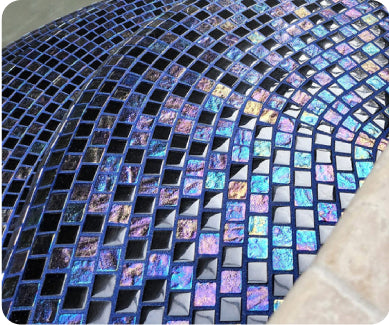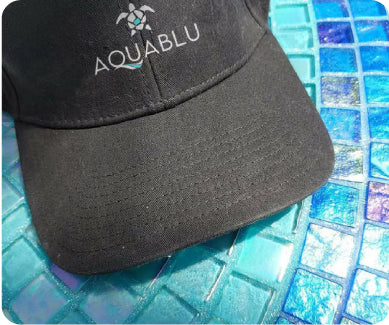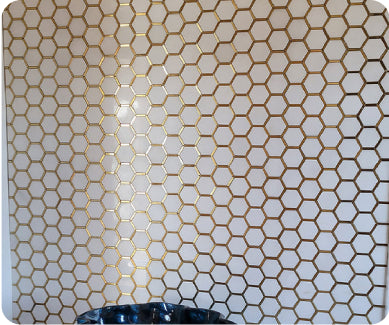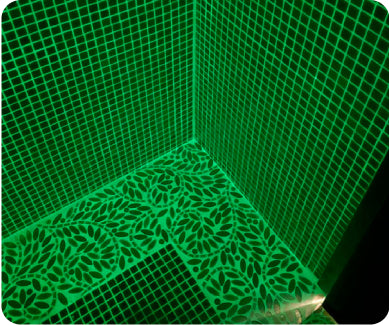Decisions, Decisions! Which Pool Tile Material Should You Choose?

Congratulations! You’ve finally made up your mind to install that new swimming pool. Or maybe you already have one and want to give it a facelift. Either way, the subject of pool tiles will be coming up at some point in the planning of your project.
You might have thought that pool tiles are pool tiles, so what decisions do I have to make?
Well, there are variations. Some might seem subtle, but they could spell the difference between being delighted with your tiles and having regrets. Like any other home improvement project, your decisions start with the basics: the materials.
Swimming pool tiles come in a variety of materials, and, of course, there are also price ranges to consider. As for materials, you’ll probably be choosing from the three primary types: porcelain tile, glass tile, or stone.
Here is a rundown of these to help you make an informed decision. Let’s start with the most popular:
1. Porcelain Pool Tile: A Popular Choice
Porcelain pool tile is one of the most common types of swimming pool tile. And it’s not hard to understand why! Once they are installed, these tiles last a long time without losing their good looks. Swimmers appreciate that they are soft to the touch, and homeowners like that they are a tough material that resists stains and scratches.
These tiles do not absorb heat, which makes them ideal for paving around the pool deck and as waterline tile. Since they don’t absorb water, you don’t have to contend with efflorescence, that whitish crystalline deposit that’s common on the surface of stone.
One downside to porcelain: It’s very labor-intensive to install, which adds to the cost.
2. The Allure of Glass Pool Tile
Glass is fast becoming the most popular material for pool tile. And why not? What could complement the natural transparency of water better than glass? It’s also versatile. It can be molded into all sorts of shapes—pebble-like creations that give an abstract feel or mosaics for a more classical look.
Glass pool tile is non-porous and durable, which makes it a good choice for a pool lining material. Glass will hold down your costs for maintenance and repairs and produce a longer lifespan. Not only is this a beautiful choice for the pool, but it has been shown to increase the resale value of houses in which it is used.
Since glass is the most expensive choice for pool tile, many pool owners save money by alternating it with other types of less-expensive tiles or finishes.
3. Stone Tile for a Natural Look
Those who appreciate a Mediterranean style might be drawn to the textured look of stone. It has the advantage of being slip-resistant, and it stays warm after a day in the sun.
Despite its aesthetic appeal and beautiful natural look, stone has some disadvantages. Some of these are associated with cost. Natural stone is heavy and unwieldy, making it difficult to transport and install.
It is also less resistant to stains and scratches than the other choices, and its porosity means it must be sealed to prevent moisture from seeping in and causing problems, especially in freezing weather.
But there is another option for incorporating natural stone into your pool tile. They are called pebble tiles and are made from smaller stone pieces. These stones, taken from river beds, can be turned into mosaics and arranged in a variety of colors, sizes, and shapes.
You don’t have to make these decisions on your own
Let us help you! Picking the tiles for your swimming pool can be confusing—even intimidating. If you have questions about the materials, colors, or designs you’re contemplating, give us a call at (800) 971-1442 or fill out our contact form. You can also visit our website at https://www.aquablumosaics.com/.
Maybe you would like to create your own one-of-a-kind work of art. If you can imagine it, we can help you design and produce it. Either way, we look forward to hearing from you!

